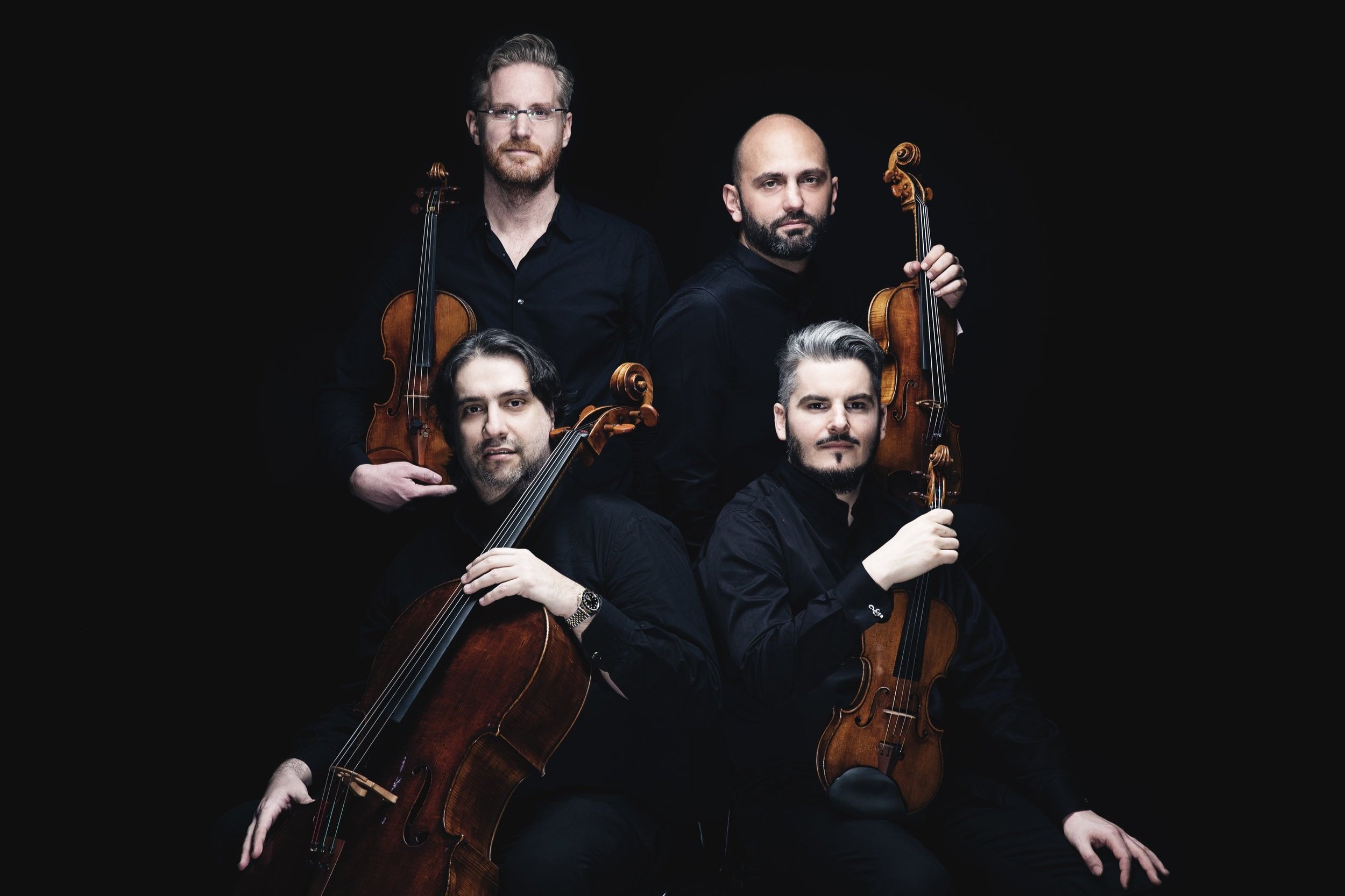November 14, 2021
Quartetto di Cremona
Strings
Quartetto di Cremona © Nikolaj LundBiography
Cristiano Gualco - violin
Paolo Andreoli - violin, viola
Simone Gramaglia - viola, tenor viola, recorder
Giovanni Scaglione - cello
The Quartetto di Cremona takes its name from the Italian city where the world-renowned Amati, Guarneri and Stradivari violins and violas were created. The four members of the Quartetto di Cremona, founded in 2000 at the Accademia Walter Stauffer, were born and currently reside in Genoa; they were awarded honorary citizenship by the city of Cremona in 2015. The quartet has toured extensively on five continents and appears regularly at leading festivals. In 2018 the German label Audite issued the Quartetto di Cremona’s complete cycle of the Beethoven quartets. “Breadth of sound and capriciousness combined with perfect tuning and ensemble has the players sounding absolutely of one voice… Nothing less than life-affirming” wrote Gramophone magazine. “Dynamic contouring was as sleek and elegant as an Armani suit, and it tailored the music to perfection” wrote The Strad. First LMMC appearance.
https://www.quartettodicremona.com/
Notes
More than two and a half centuries after its composition, Bach’s Art of the Fugue (Die Kunst der Fuge) remains one of the towering pinnacles in the landscape of western music. It was published in 1751, the year following Bach’s death, yet, unaccountably, there was no performance until 1927, when it was given in the Thomaskirche in Leipzig on July 28 (the date of Bach’s death) under the direction of Karl Straube. In the Well-Tempered Clavier, the composer explored the world of the fugue in 48 different examples, twice each in the twelve major and twelve minor keys. In The Art of Fugue, he explored this world even further by systematically working out the same twelve-note fugal subject in myriad ways, all in the same key (D minor). The fourteen numbers for four voices (called contrapuncti), the four canons for two voices and the final, incomplete contrapunctus constitute a veritable textbook of fugal writing, a summation of every manner of manipulation one might conceive in attempting to write fugues. One can only stand back in astonishment at the intellectual rigour that produced such a formidable piece of musical architecture, yet at the same time admire it for the esthetic pleasure it provides on a purely intuitive level. Bach himself said that his purpose in writing was to “refresh the spirit” of music lovers. Bach left no indication as to which instrument(s) should play this music. It has been performed by an enormous variety of instruments and ensembles, ranging from solo harpsichord to full orchestra. In between we find, among many others, flute quartet, saxophone quartet, and, as with today’s concert, string quartet.
Robert Markow
Programme
BACH (1685-1750)
Art of the Fugue in D minor, BWV 1080
(circa 1740-1750)
Kirshbaum Associates
-
Downloads
-
Next Concert
George Li, piano
December 5, 2021 at 3:30 p.m.

